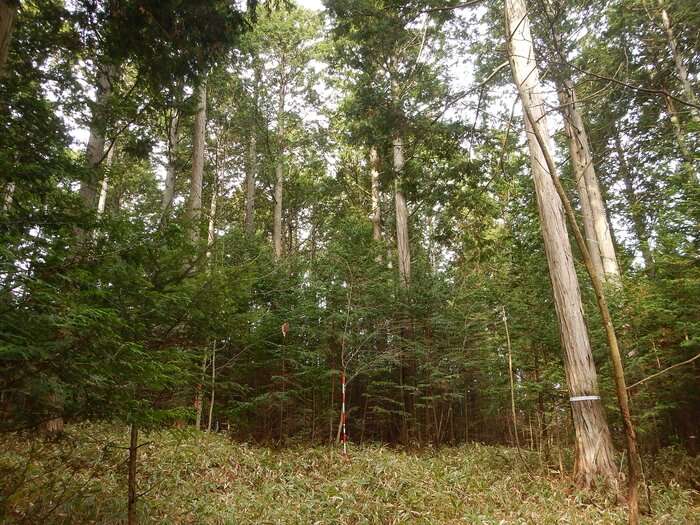The spatial relationship between damaged understory and felled trees in a shelterwood forest

The shelterwood forest system is a natural regeneration method of forest management that supplies the next generation of trees from overstory tree seeds without planting. This method lowers the cost of forest management by reducing the need for artificial reforestation through planting. This means that the understory trees must be preserved from felled trees during harvest.
However, protection of understory trees reduces harvesting efficiency, and thus increases the cost of logging. To evaluate whether the conservation of understory trees is commensurate with the increase in harvesting costs, it is necessary to quantitatively clarify the relationship between removing the overstory trees and the emergence pattern of the understory loss. A research group led by Dai Otsuka of Shinshu University's Faculty of Agriculture has proposed a model to measure such damage to the understory spatial distribution.
Researcher Otsuka states that the group was able to come to a simple but clear conclusion that, "felled trees should be worked on so they do not come into contact with conservation targets." The group counted the number of understory trees before and after final cutting, as well as the extent of damage to the trees per spatial grid. Geographic Information System was used to reproduce the felling direction and physical contact between the harvested trees and understory trees. Logistic regression was performed using the extracted frequencies of physical contact as explanatory variables and variables important for reproducing the spatial pattern of the damaged understory were selected.

This method of avoiding damage to the understory has a low barrier to entry for forest management. The research made clear that widely assumed ideas from the field are not wrong. Through a real damage model, forest owners can predict in advance potential losses for harvesting. This will be useful especially in natural renewal operations.
In upcoming research projects, Otsuka hopes to minimize damage to understory in areas targeted in this paper. He hopes to also clarify if natural renewal operations are cost-effective or disadvantageous compared to general clear-cutting, which requires the cost of artificial planting.
More information: Dai Otsuka et al, Spatial relationship between damaged understory and felled trees during the final cutting in a shelterwood forest, International Journal of Forest Engineering (2021).
Provided by Shinshu University





















